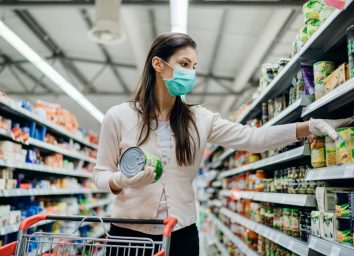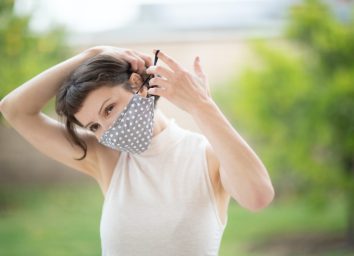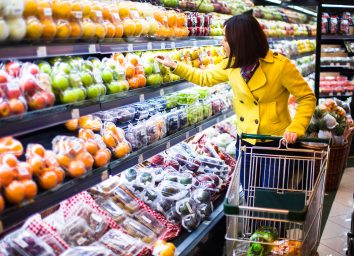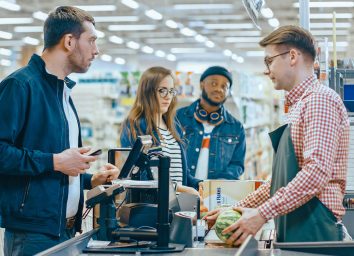There’s One Main Way to Contract COVID-19 When Grocery Shopping, CDC Says
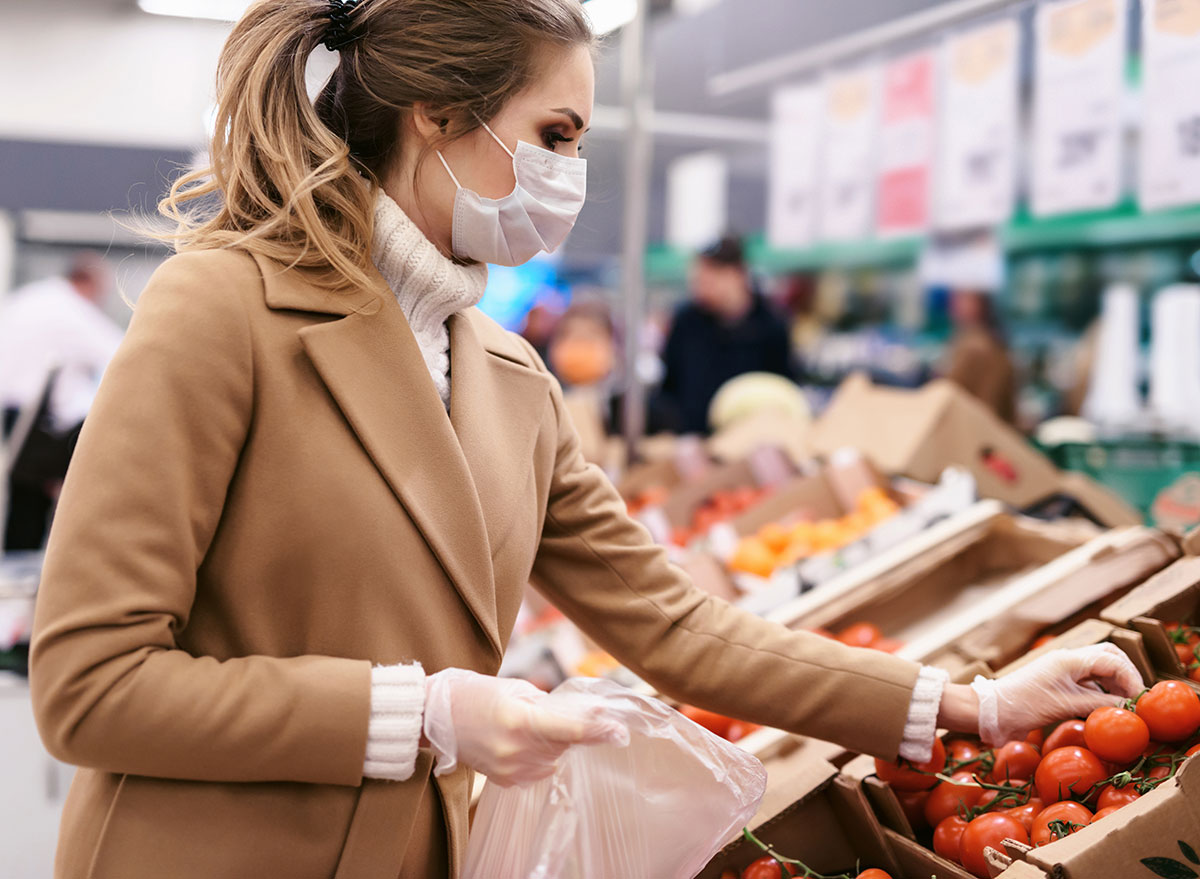
Grocery shopping, while a necessity, has become one of the most anxiety-inducing activities in our daily pandemic-filled lives. From crowds that are sometimes impossible to avoid to concerns surrounding what we should and shouldn’t be touching, the potential for contracting the coronavirus seems overwhelming. However, we can all breathe a collective (masked) sigh of relief, because the CDC is has provided clear, instructive safety guidelines that we can follow to ensure we’re staying as safe as possible when we’re out shopping.
As the CDC is learning more about the nature of COVID-19 and the way it spreads among the population, their guidelines on potential ways you could contract the disease and how to protect yourself are constantly being updated. To consolidate all of this information, the government agency put together a handy guide of tips to follow when grocery shopping so you can be aware of the main source of transmission and how to protect yourself.
(Related: 8 Grocery Items That May Soon Be in Short Supply.)
CDC’s most recent guidelines dispel some of the fears around contracting the virus
When grocery shopping, there are multiple potential sources of COVID-19 transmission you should be aware of. There’s one, in particular, that many of us are worried about: touching food and food packaging.
At the beginning of the pandemic, many of us were concerned about picking up coronavirus from food packaging. Staying away from others is one thing, but how are you supposed to protect yourself from the invisible virus that may virtually live on all kinds of objects you are coming into contact with?
Fears grew when a study in The New England Journal of Medicine found that coronavirus could survive on certain surfaces for days. However, the study noted there is no conclusive evidence that people can get infected by the virus this way.
However, now the CDC has stated that “the risk of [COVID-19] infection from food products, food packaging, or bags is thought to be low.” (That being said, scientists will be looking further into how food and food packaging may contribute to the spread.)
That goes for food and food products, but what about everything else you find at a grocery store? According to UC Davis food virology researcher Erin DiCaprio, PhD, it’s more important to focus on avoiding high-touch surfaces like door handles and credit card machines than a tomato in the produce section.
Touching surfaces or objects isn’t thought to be the main way the virus spreads, but the CDC clarified that “it may be possible that a person can get COVID-19 by touching a surface or object that has the virus on it and then touching their own mouth, nose, or possibly their eyes.”
The CDC’s guidelines for grocery or food retail workers still encourage employees to minimize handling cash, wipe down the counter between each customer at checkout, and to ask customers to use touchless payment options.
This is the most likely way you’ll contract the virus
The CDC and WHO are in agreement that the primary way you could contract coronavirus is via person-to-person contact. Here are ways in which you are currently most likely to contract or pass around the virus:
- Being in close contact with another person (closer than six feet).
- Via respiratory droplets which are expelled when an infected person coughs, sneezes, or talks.
- If these droplets land in another person’s mouth or nose, or if they’re inhaled into the lungs.
The CDC notes that it may be possible for COVID-19 to spread in other ways, but these are not thought to be the main ways the virus spreads. This conclusion comes primarily from epidemiological data—tracking ways in which the majority of the people that were infected became infected.
What does this mean?
It means you still need to practice safety measures and good hygiene as well as avoid high-touch surfaces—especially when you’re out in highly crowded places like grocery stores. The most important precaution is wearing a face mask and keeping a safe social distance from others at all times. Keep washing your hands frequently and be mindful of touching your face. However, you can let go of some of the anxiety around wiping down your groceries—not only is it unnecessary, but it can also be dangerous.
How to protect yourself while grocery shopping
The FDA shared tips on what is important to keep in mind the next time you need to get groceries:
- Carry your own wipes, or use one provided by the store to wipe down and disinfect the handles of the shopping cart or basket.
- Prepare a shopping list in advance.
- Go during hours when fewer people will be there.
- Wear a face covering or mask while you are in the store.
- Practice social distancing while shopping.
- Use hand sanitizer after leaving stores.
- Wash your hands with warm water and soap for at least 20 seconds when you return home and again after you put away your groceries.
The CDC adds that you can further protect yourself from the coronavirus by “limiting visiting the grocery store, or other stores selling household essentials, in person. In general, the more closely you interact with others, and the longer that interaction, the higher the risk of COVID-19 spread. Order groceries and other items online for home delivery or curbside pickup (if possible) or check with your local grocery store to see if pre-order or drive-up options are available.” Check out these additional 6 New Grocery Shopping Tips You Need to Follow for more ways to protect yourself.
For more healthy eating news, make sure to sign up for our newsletter!
